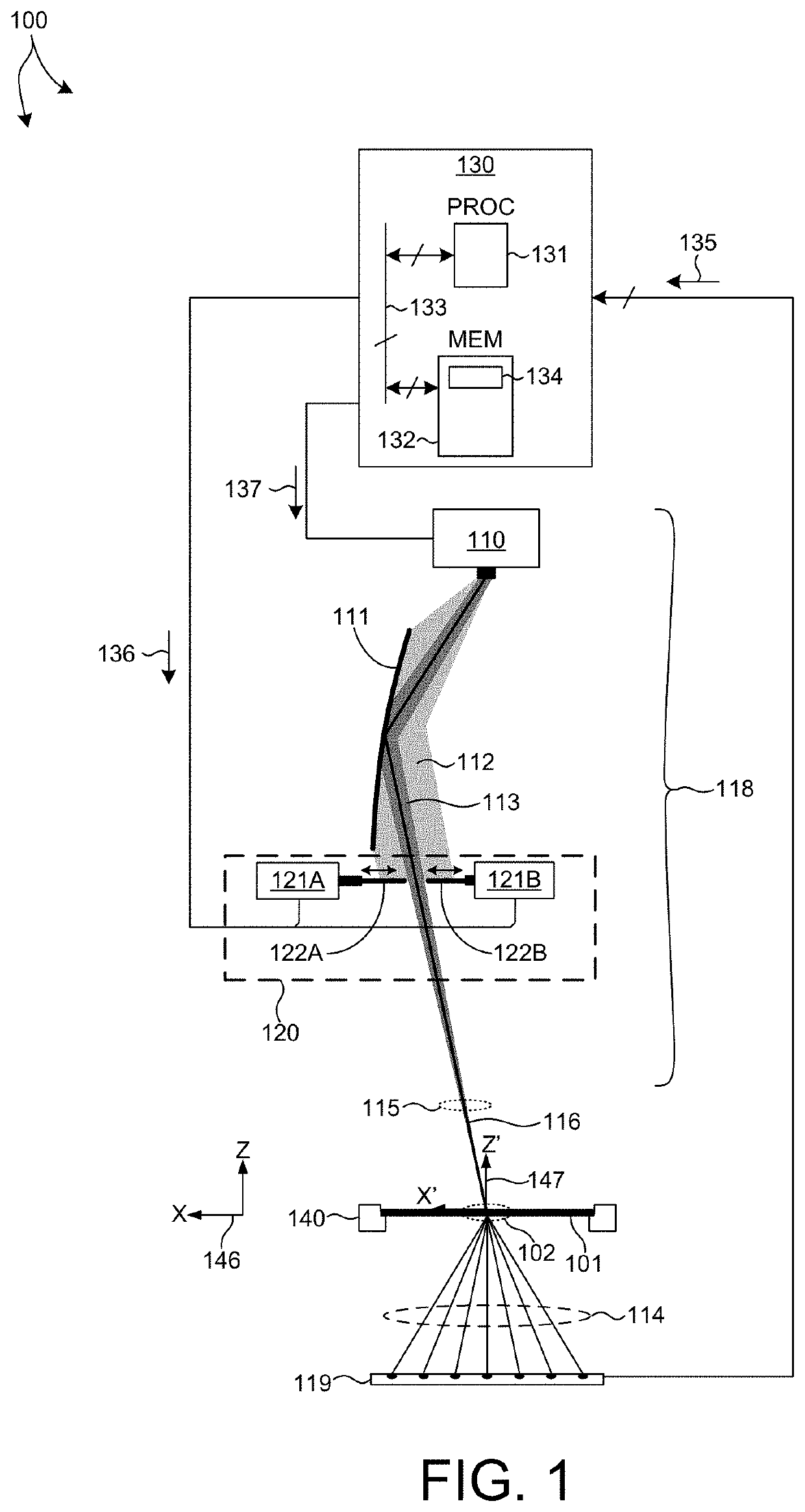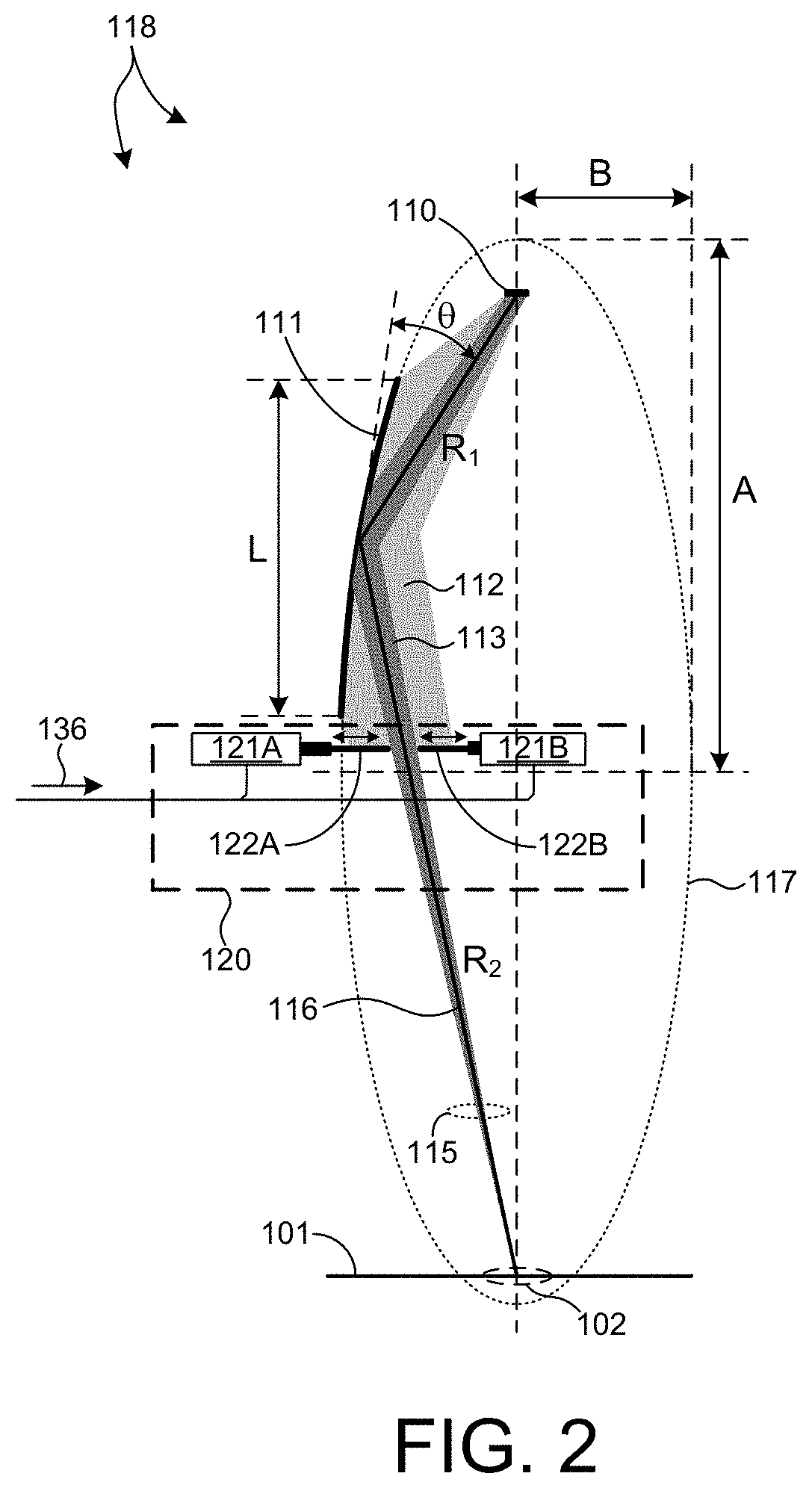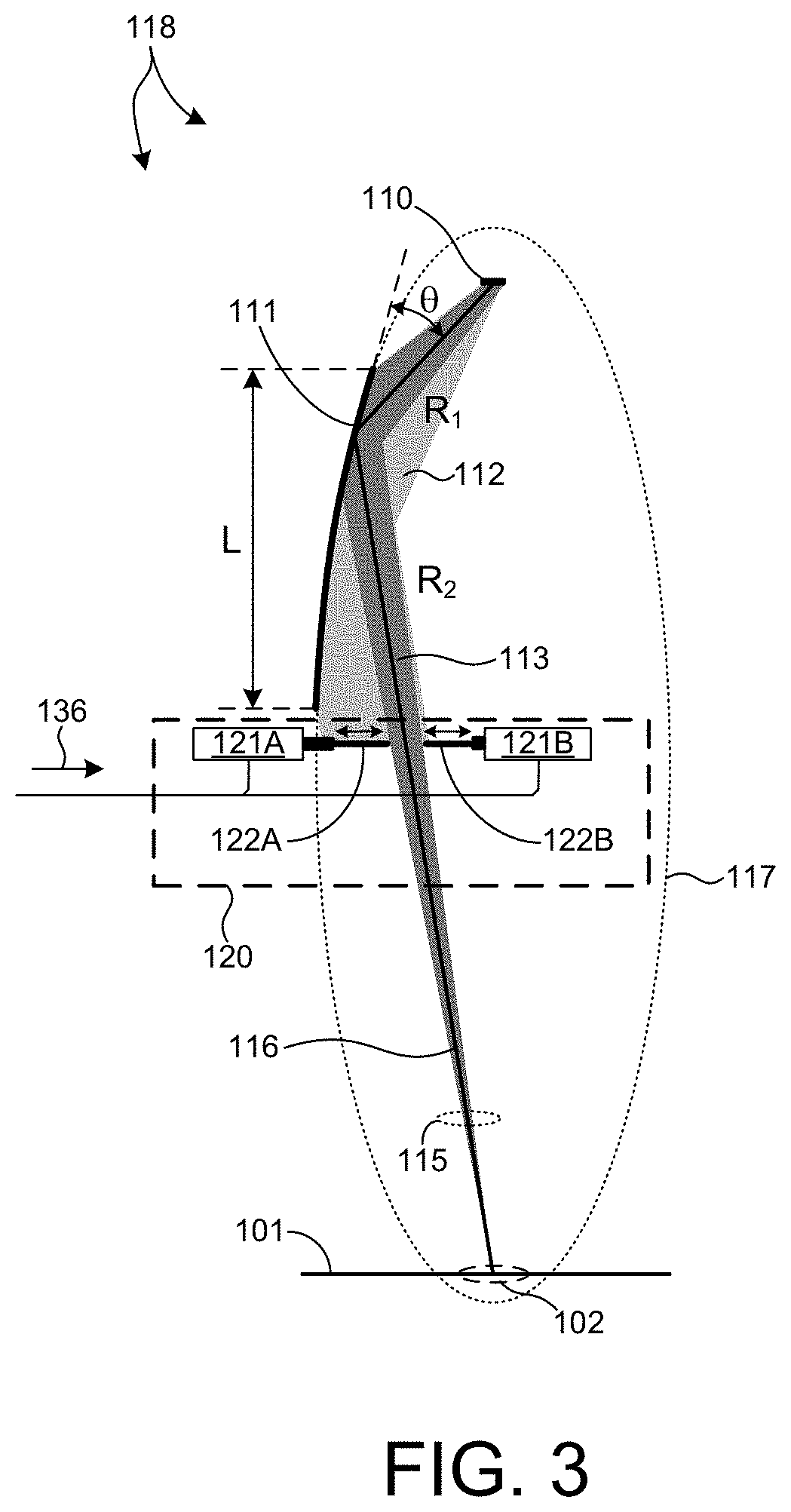X-ray zoom lens for small angle x-ray scatterometry
a zoom lens and x-ray scatterometry technology, applied in the field of xray metrology systems and methods, can solve the problems of difficult optical radiation penetration to the bottom layer, difficult characterization, and more difficult characterization, and achieve the effect of highest achievable illumination photon flux
- Summary
- Abstract
- Description
- Claims
- Application Information
AI Technical Summary
Benefits of technology
Problems solved by technology
Method used
Image
Examples
Embodiment Construction
[0031]Reference will now be made in detail to background examples and some embodiments of the invention, examples of which are illustrated in the accompanying drawings.
[0032]Practical T-SAXS measurements in a semiconductor manufacturing environment require measurements of different sized metrology targets with varying diffraction characteristics. In some examples, a metrology target characterized by T-SAXS measurements as described herein is located within a scribe line of a wafer under measurement. In these examples, the metrology target is sized to fit within the width of the scribe line. In some examples, the scribe line width is less than eighty micrometers. In some examples, the scribe line is less than fifty micrometers. In general, the width of the scribe lines employed in semiconductor manufacturing is trending smaller. In some examples, the metrology target characterized by T-SAXS measurements as described herein is located within an active die area of the wafer under measu...
PUM
| Property | Measurement | Unit |
|---|---|---|
| angles of incidence | aaaaa | aaaaa |
| distance | aaaaa | aaaaa |
| roughness | aaaaa | aaaaa |
Abstract
Description
Claims
Application Information
 Login to View More
Login to View More - R&D
- Intellectual Property
- Life Sciences
- Materials
- Tech Scout
- Unparalleled Data Quality
- Higher Quality Content
- 60% Fewer Hallucinations
Browse by: Latest US Patents, China's latest patents, Technical Efficacy Thesaurus, Application Domain, Technology Topic, Popular Technical Reports.
© 2025 PatSnap. All rights reserved.Legal|Privacy policy|Modern Slavery Act Transparency Statement|Sitemap|About US| Contact US: help@patsnap.com



